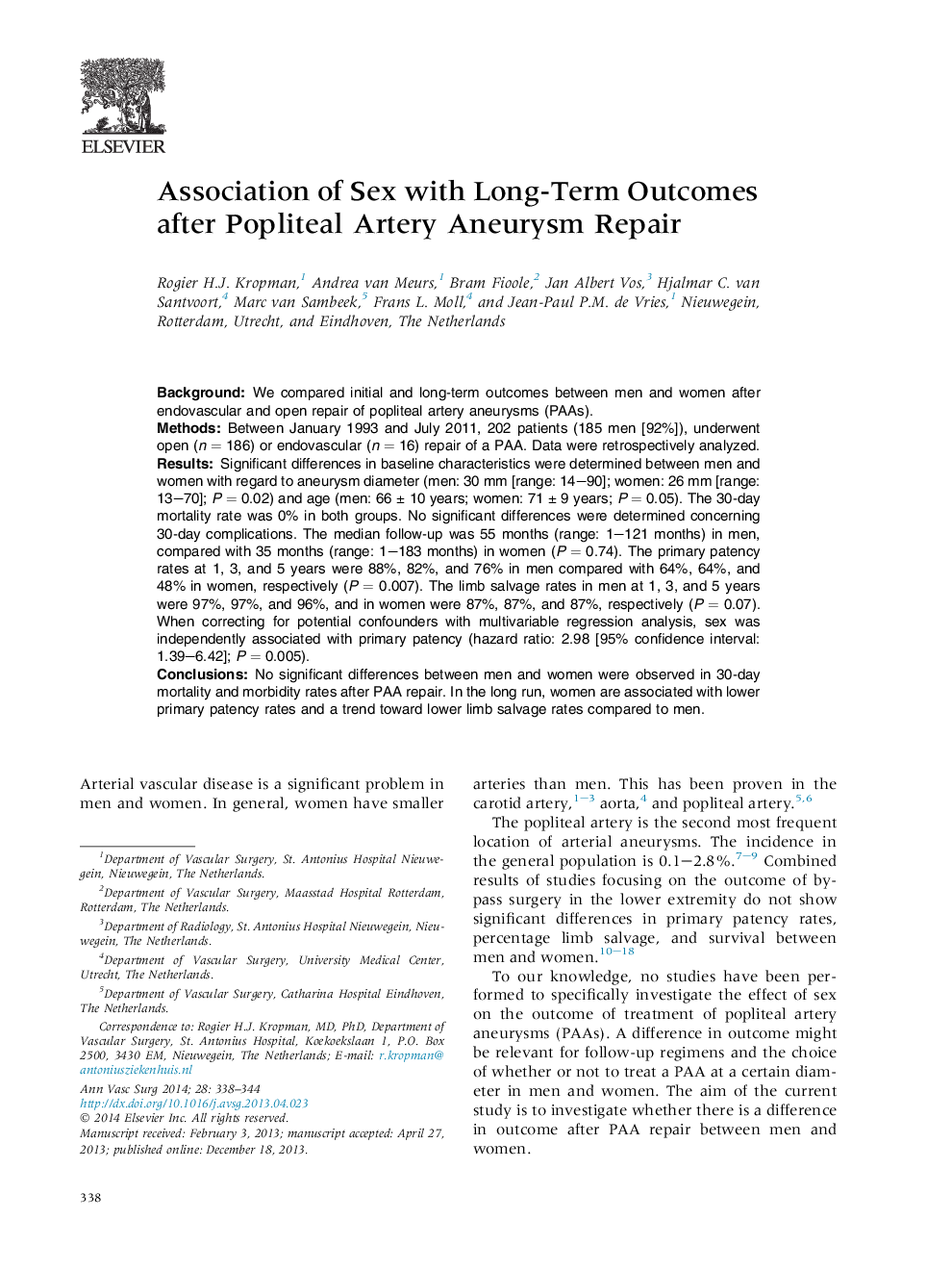| Article ID | Journal | Published Year | Pages | File Type |
|---|---|---|---|---|
| 2886325 | Annals of Vascular Surgery | 2014 | 7 Pages |
BackgroundWe compared initial and long-term outcomes between men and women after endovascular and open repair of popliteal artery aneurysms (PAAs).MethodsBetween January 1993 and July 2011, 202 patients (185 men [92%]), underwent open (n = 186) or endovascular (n = 16) repair of a PAA. Data were retrospectively analyzed.ResultsSignificant differences in baseline characteristics were determined between men and women with regard to aneurysm diameter (men: 30 mm [range: 14–90]; women: 26 mm [range: 13–70]; P = 0.02) and age (men: 66 ± 10 years; women: 71 ± 9 years; P = 0.05). The 30-day mortality rate was 0% in both groups. No significant differences were determined concerning 30-day complications. The median follow-up was 55 months (range: 1–121 months) in men, compared with 35 months (range: 1–183 months) in women (P = 0.74). The primary patency rates at 1, 3, and 5 years were 88%, 82%, and 76% in men compared with 64%, 64%, and 48% in women, respectively (P = 0.007). The limb salvage rates in men at 1, 3, and 5 years were 97%, 97%, and 96%, and in women were 87%, 87%, and 87%, respectively (P = 0.07). When correcting for potential confounders with multivariable regression analysis, sex was independently associated with primary patency (hazard ratio: 2.98 [95% confidence interval: 1.39–6.42]; P = 0.005).ConclusionsNo significant differences between men and women were observed in 30-day mortality and morbidity rates after PAA repair. In the long run, women are associated with lower primary patency rates and a trend toward lower limb salvage rates compared to men.
